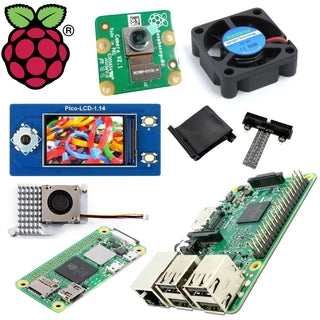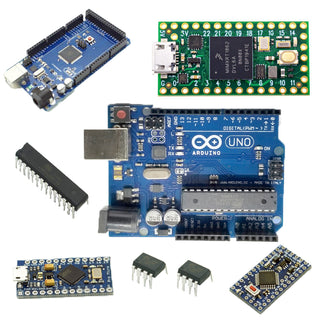This post was originally written on December 29, 2012.
We often get asked about how to run an Arduino away from a PC. The typical answer is a 9~12VDC wall wart – but this ties your Arduino to the grid. Vetco has a few easy ways to make your Arduino power source portable.
We are using AA, AAA and 9V batteries in this demonstration, but almost any battery will do. C Cells, D Cells, and even lithium coin cells will work.
Parts:
All of these parts are available from Vetco Electronics (vetco.net). Not all of them are required – See our examples below and decide what works best for your application.
1) Arduino UNO R3 (Programmed with the LED Blink routine) and a RED LED between pins 13 and GND.

2) 5 Volt Boost Converter (VUPN6581)

3)Double AA Battery Holder

4)Single AAA Battery Holder

AAA Battery Holder
5)9VDC Battery Clip and a 2.5mm DC Barrel Plug

Arduino 9V Battery Holder
6) 12″ 2/22 Shielded Cable, 2.5mm DC Barrel Plug, and 2x Copper Alligator Clips

Lead Acid Battery Power Cable
7) 2 Position Terminal Strip

2 Position Terminal Strip
Running an Arduino from 2 x AA Batteries:
This is very easy to do. The batteries are arranged in series in this battery holder for an output of 3VDC. 3VDC is not enough to run an Arduino UNO, which requires a minimum of 5VDC. Fortunately, this lovely piece of technology exists: The 5 Volt USB Boost Converter – (VUPN6581).
This fantastic device is a DC-DC converter – it can take voltages as low as 1VDC and turn it into 5VDC @500mA. Using the USB Boost converter requires soldering wire leads to the (+) and (-) pads on the circuit board. A USB cable acts as the power cord for the Arduino, supplying the 5VDC from the output of the boost converter.
No surprises here, the 2 AA batteries and Boost Converter power the Arduino.

ArduinoUNO Running From 2xAA Batteries and the 5VDC USB Boost Converter
Power an Arduino from a single AAA battery:
Can it be done? We weren’t sure when we came up with the idea. The single 1.5VDC AAA battery powers our 5V USB Boost Converter and runs the Arduino just fine! Keep in mind that the A.H. capacity of a AAA battery is small and it will not last nearly as long as 2 x AA batteries or a 9V cell.
Here you can see the AAA battery setup powering the Arduino. The red LED is happily flashing away.

Using a 9V battery to power an Arduino:
This is simple – no USB boost converter or external voltage regulators are necessary; the Arduino operating voltage is a range from 7.5VDC to 12VDC. In the example below we are powering an Arduino directly from the 9V battery using the DC Input jack. The onboard voltage regulator on the Arduino takes care of regulating the voltage down to 5VDC. The only parts required to run an Arduino from a 9V battery are a 9V battery + battery clip, and a 2.5mm Male DC Barrel Plug.

Arduino UNO Running From 1x9V Battery
Powering an Arduino from a 12VDC battery:
The votlage regulator on the Arduino can accept a maximum input voltage of 20VDC – This is well above the typicall voltage of a fully charged lead acid battery (13.8VDC). As you can see below, we simply used a 2.5mm DC barrel plug soldered to a pair of aligator clips. They clip on to the battery terminals and the Arduino fires right up. An inline fuse on one or both leads would be a safe addition to this setup – the instantaneous (shorted) current from a 12VDC battery of this size is very high.
A 7AH 12VDC Lead Acid battery like the one below will power an Arduino for a long time.

Running an Arduino from batteries is easy and inexpensive. The ability to make your Arduino portable can open the door to wide range of new project ideas. Just about any battery configuration can be used on an Arduino – AAA, AA, C, D, 9V Cells, etc.
In a future blog post we will measure the current consumption and time how long the Arduino will run various battery sources.



